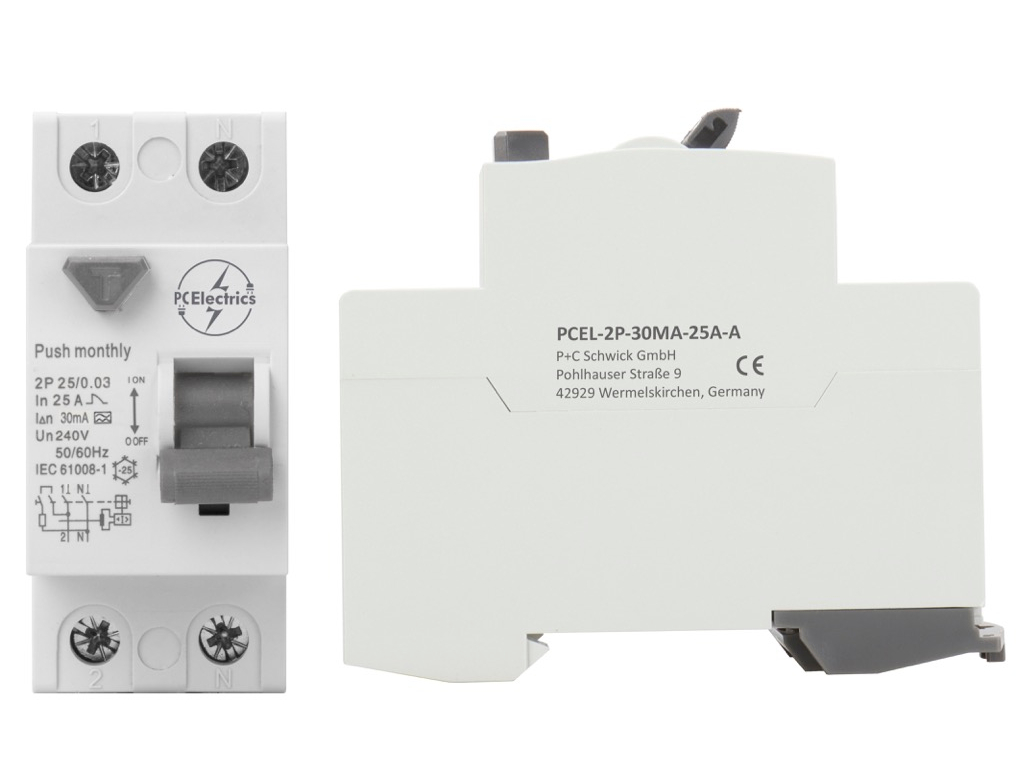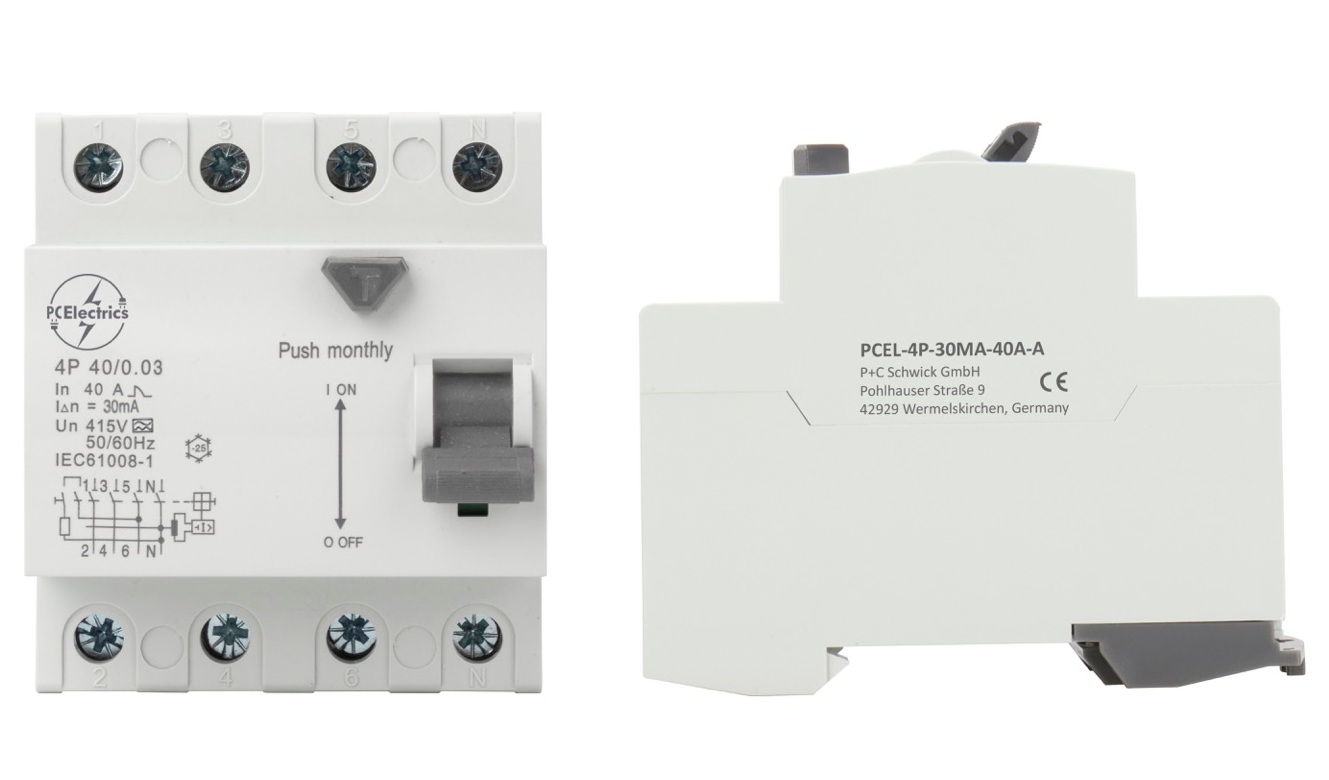Residual Current Circuit Breakers (RCCB)
RCDs: safety for your home and your electrical installation
What is an RCD?
An RCD, also known as a residual current circuit breaker, is an electrical engineering device that protects against dangerous residual currents. These switches detect unwanted electrical currents, which can be caused by defective devices or insulation faults, for example. As soon as a residual current is detected, the RCD immediately interrupts the circuit to protect people and animals from a dangerous electric shock.
The RCD is often installed in homes, commercial premises and public facilities to provide an additional layer of safety. This protection mechanism is particularly essential in damp rooms such as bathrooms or basements, where the risk of electric shock is increased.
How an RCD works
The operation of an RCD is based on the principle of residual current. In normal operation, the currents flowing through the incoming and outgoing conductors are equal. If a residual current occurs, differences arise between these two currents. The RCD measures this differential current and reacts as soon as the specified threshold value is exceeded. The device then switches off the relevant circuit at lightning speed.
This technology ensures that dangerous situations are detected before they can even arise. This gives you a high level of safety in your entire electrical system, as even minimal residual currents cannot cause any major damage.
Important areas of application for RCDs
An RCD should be installed in every household, especially in areas with high levels of moisture such as bathrooms, kitchens and outdoor areas. Basements, garages and laundry rooms also benefit from this additional protection.
In industry and commerce, the installation of an RCD is not only recommended in many areas, but is required by law. Workshops, laboratories and areas with machinery and electrical equipment have an increased risk of electrical contact and therefore require reliable protective devices.
Types of residual current circuit breakers
There are different types of RCDs, which can be selected depending on the area of application and protection requirements. Single-phase RCDs are ideal for household appliances and small installations, while three-phase RCDs are suitable for larger installations and industrial applications.
Another important difference is the rated residual current, which indicates the current difference at which the switch trips. Common values are 30 mA for personal protection and 300 mA for fire protection. You should always select the correct type and value for the respective area of application.
Installation and maintenance of an RCD
The installation of an RCD should always be carried out by a qualified electrician. Incorrect installation can impair its function and jeopardize safety. The specialist will install the switch in the fuse box and connect it accordingly so that all required areas are covered.
Regular maintenance and testing of the RCD is also essential. Many devices have a test button that allows you to check the functionality of the switch yourself. It is recommended to carry out these tests at least every six months to ensure that the switch trips reliably in an emergency.
Advantages of an RCD
The biggest advantage of an RCD is that it increases safety in your home or business. By reacting quickly to residual currents, the switch protects against life-threatening electric shocks and potential fire hazards that can be caused by electrical faults. The safety of your electrical appliances and installations is also increased by the additional protective mechanism.
Another advantage is the ease of installation and handling. Modern RCDs are compact and fit into most standard fuse boxes. Regular maintenance is uncomplicated and can largely be carried out by the user. This ensures consistent safety without a great deal of effort.
Legal regulations and standards
In many countries, the installation of RCDs and their regular testing are regulated by various standards and laws. These regulations serve to protect the general public and ensure that high safety standards are maintained. In Europe, the relevant standards are set out in the VDE guidelines and IEC standards.
It is important that you find out about the applicable regulations in your country and ensure that all requirements are met. A qualified electrician can advise you on this and ensure proper installation and compliance with the rules.
Summary
FI circuit breakers are an indispensable part of any modern electrical installation, providing safety and protection. They detect residual currents and react in fractions of a second to protect people, animals and property from electrical hazards. The different types of RCDs, as well as their installation and regular maintenance, ensure the smooth and safe operation of your electrical systems.
RCDs are now standard in households, businesses and industrial plants and play a key role in preventing accidents and damage. Invest in the safety of your electrical installation and benefit from the numerous advantages offered by an RCD.


